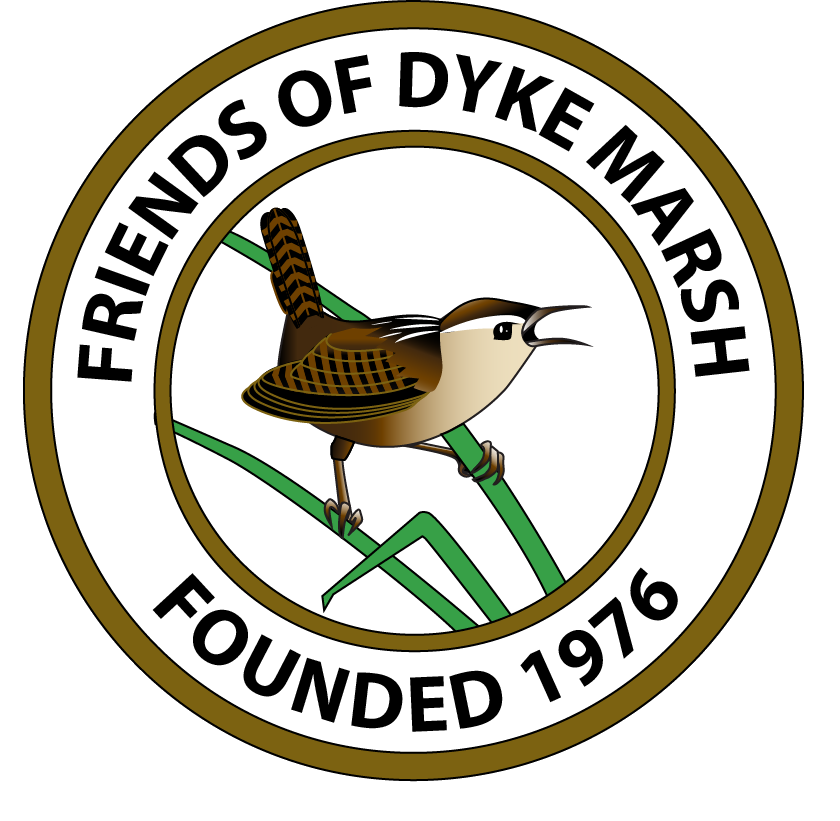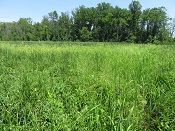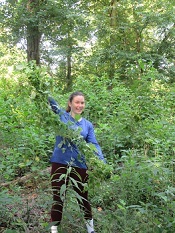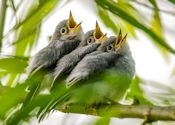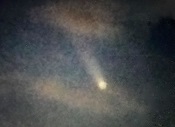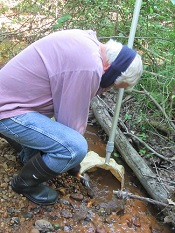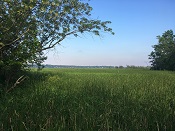Dyke Marsh is like a “sea of green” in the summer when wetland plants like wild rice (Zizania aquatica) are at their height. Wild rice shimmers in the breeze and can grow to be 10 feet tall. In the second photo, it is in flower or bud. In the third, it is in fruit.
In partnership with the National Park Service, FODMers have been working in the summer of 2020 to control invasive plants in the .065-acre native plant area. Volunteers have hauled out bags of plants like mile-a-minute (Persicaria perfoliata), Japanese stiltgrass (Microstegium vimineum), English ivy (Hedera helix) and porcelain berry (Ampelopsis brevipedunculata).
Invasive plants can outcompete natives and compromise the habitat, so it is important to try to keep them under control. Many native insects and other wildlife depend on the plants with which they co-evolved.
FODMer Jane Gamble had two photographs in Virginia Wildlife magazine’s July/August 2020 annual photography showcase which highlighted images from 111 photographers. One photo was of three blue-gray gnatcatcher nestlings begging for food. The second was a white-tailed doe deer with her fawn. The magazine is published by the Virginia Department of Wildlife Resources. Congratulations, Jane.
FODMer Ed Eder snapped a photo of the newly-discovered comet, C/2020 NEOWISE on July 13 at 4:40 a.m. Ed was looking from Dyke Marsh north-northeast toward the middle of the Woodrow Wilson Bridge and up about 10 degrees. Ed suggests that after July 15, people should watch for it in the north-northwest sky at night about 80 minutes after sunset.
On June 26, 2020, four FODM volunteers and one Westgrove P.A.C.K. volunteer conducted habitat quality testing in an unnamed intermittent stream flowing through Mount Vernon Park into west Dyke Marsh. This effort was led by Dan Schwartz and Ashley Palmer of the Northern Virginia Soil and Water Conservation District (NVSWCD).
From 9:30 a.m. to 12 noon, the group took 20 samples from the stream within a 100-meter span, with the goal of identifying 100 living benthic macroinvertebrates. They found these species: 13 scuds, three trueflies, one aquatic worm and one “other.”
Visitors to Dyke Marsh will find a photography station called Chronolog on the Haul Road trail at the native plant site, DMW-101. Unfortunately, our second station on the boardwalk across from Tulane Drive, DMW-102, was destroyed twice. Neither FODM or the U. S. Park Police know why it was apparently vandalized. At this time, FODM will not replace it at that site
This station helps document and better visualize landscape changes over time in the preserve. Changes in a landscape can be slow to see, whether they are seasonal changes, results of the restoration project or longer-term changes.
